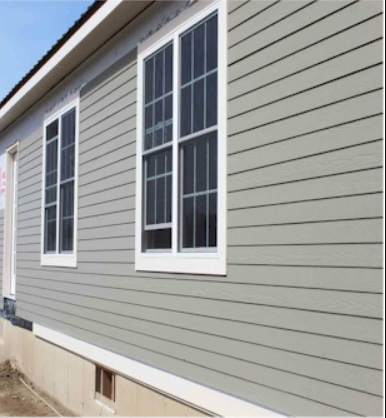Like any material, vinyl has its own advantages and disadvantages. The many advantages of vinyl siding Installation more than compensate for some of the not-so-positive qualities of this material. Let’s list the pros and cons of vinyl.
Benefits of Vinyl Siding Installation:
• low weight
Vinyl panels are relatively lightweight. This implies two advantages of this material at once: firstly, such panels are easier to install, and secondly, even old wooden buildings that are simply not able to withstand more massive materials can be sheathed with vinyl;
• resistance to moderate acid-alkaline effects vinyl siding installation. Obviously, the building does not stand in a vacuum. The environment contains many corrosive chemicals. Of course, dousing vinyl siding with acid will ruin it. But vinyl siding Installation is resistant to caustic substances in the concentration in which they are found in atmospheric precipitation and air;
• resistance to moderate mechanical stress. Again, if you hit the skin with a sledgehammer, the panels will crack. If the impact is not too strong, the panel will bend, and then take its original shape;
• durability
The service life of vinyl siding is on average 30-40 years. The warranty period for panels can be up to 50 years;
• minimum requirements for maintenance and repair. Subject to the rules of operation, vinyl siding does not need regular repair, painting, impregnation with anti-rotting drugs and other processing. This means that once you spend money on vinyl siding Installation, you can save a lot on its maintenance in the future;
• non-conductivity of electric current. Thanks to this property of siding, the risk of electric shock and fires due to short circuits is reduced;
• low degree of flammability
Vinyl siding is not flammable, so even if there is a fire, the sheathing will not flash, but will slowly melt;
• resistance to very low and very high temperatures. Vinyl siding is resistant to temperatures ranging from -50 to +50 ° C. This means that such a sheathing is suitable for both hot and cold climates. Vinyl siding is not afraid of sudden temperature jumps;
• rich color palette
Manufacturers produce panels in more than 100 different shades: from very dark to very light. You can choose a siding for every taste;
• imitation of natural material. Vinyl siding panels are processed in such a way that in texture they resemble natural materials, usually wood. Therefore, vinyl cladding does not look unnatural. Vinyl siding is similar in appearance to wood at a significantly lower cost;
• fairly low cost. The saying “cheap and cheerful” can be safely attributed to vinyl siding. The ratio of high decorative qualities and low prices has already been mentioned in the previous paragraph;
• environmental friendliness. Despite its artificial origin, vinyl is an environmentally friendly material.
Canadian firm Mitten Vinyl Inc is one of the leading manufacturers of vinyl siding. This company was one of the first to manufacture vinyl panels, so the technology for creating PVC panels has been worked out to its subtleties.
Disadvantages of Vinyl Siding Installation:
• instability to strong mechanical stress. As noted, a strong impact can crack the vinyl panel. True, it is difficult to imagine an ordinary situation in which the cladding of a house would be subjected to such blows;
• sufficiently high coefficient of thermal expansion. As we mentioned, this factor indicates how much the panels expand when exposed to heat and shrink in cold weather. It is important to consider the coefficient of thermal expansion of the material during installation: this indicator determines the required size of the gaps between the panels. Vinyl siding expands greatly when exposed to heat and shrinks when the temperature drops. Of course, these changes are literally a few millimeters, they are visually invisible. However, an error in the selection of temperature gaps made during installation may subsequently turn out to be fatal. If the panels are installed too close, with the onset of heat they will be close to each other and the sheathing will go in a “wave”;
• melting and the possibility of short burning
The degree of fire resistance of vinyl siding is partly due to the advantages of this material and partly to the disadvantages. A house clad in vinyl siding won’t flash like a match. However, vinyl is not iron. Its burning is possible, although it lasts no more than 4 s. When exposed to an open flame, the vinyl begins to melt. Of course, when it comes to fire, vinyl’s low susceptibility to combustion becomes its plus. But when the question concerns a “peaceful flame”, for example a fire, everything becomes far from simple. If you do not want to spoil the cladding, then under no circumstances should an open fire be made near the wall sheathed with vinyl siding.

